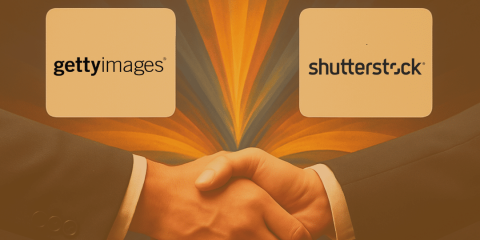Baran Baş
The Turkish Competition Board (“TCB” or “the Board”) unconditionally cleared the acquisition of sole control over Shutterstock, Inc. (“Shutterstock”) by Getty Images Holdings, Inc. (“Getty Images”) by its unanimous decision dated June 26, 2025, and numbered 25-23/571-363[2], which was rendered upon a detailed preliminary review (equivalent of Phase 1 under Turkish merger control regime) of nearly three months.
In assessing the transaction, the Board took into account not only the traditional boundaries of the stock-photo and editorial-content markets, but also the emerging competitive dynamics driven by generative-AI (GenAI)-based content-creation tools. This perspective signals a growing awareness of how digitalization and AI-driven production technologies are reshaping competition in the broader visual-content ecosystem.
This information note summarizes the Turkish Competition Board’s assessment in the Getty Images / Shutterstock decision by analyzing (i) the market definition adopted by the Board, (ii) the treatment of GenAI-based content-generation tools, and (iii) the conclusions reached under merger control. The note also examines recent developments before foreign competition authorities, providing a comparative perspective on how digitalization and generative-AI technologies are influencing competition in the visual-content markets.
Background
The share purchase agreement concerning the acquisition of sole control over Shutterstock by Getty Images was signed on January 6, 2025, and publicly announced on January 7, 2025[3]. Structured as a reverse triangular merger[4], the transaction was notified to the Turkish Competition Authority (“TCA” or “the Authority”) on May 2, 2025.
Shutterstock, the target company, is a US-based visual-content platform that supplies and licenses a wide range of photographic, video, music, and illustration content through multiple brands. In addition to its traditional stock-content services, Shutterstock offers GenAI content-creation tools operating with third-party technologies, and is also active in AI-based image generation through its collaboration with OpenAI’s DALL·E model. The company further provides editorial-content services to news agencies and media organizations.
The acquiring undertaking, Getty Images, is a US-based visual-content marketplace that licenses a broad collection of high-resolution photographs, videos, illustrations, and music. The company operates under three main brands: (i) Getty Images, (ii) iStock, and (iii) Unsplash. In addition, Getty Images has developed, in cooperation with NVIDIA, a proprietary GenAI tool trained exclusively on images contained within its own library.
The TCB’s Market Definition
The TCB considered the potentially affected markets to be those for creative-content supply and editorial-content supply. According to the Board, while competitive pressure from GenAI-based tools is increasingly felt in the creative-content market, such pressure is not yet observed in the editorial-content market due to concerns regarding the accuracy and reliability of AI-generated visuals. The Board further noted that even under alternative market definitions, the transaction would not give rise to competition concerns and therefore found it unnecessary to establish a precise market definition for the purposes of its assessment.
The parties to the transaction argued that visual content offerings are largely interchangeable and therefore proposed defining a broad market for the supply of visual content, encompassing stock-photo agencies, social-media platforms, and GenAI-based image producers. They nonetheless noted that, if a segmentation were to be made, the market could be divided into two segments: creative content and editorial content.
The Authority sought the views of various market stakeholders regarding the appropriate market definition as well as the artificial intelligence aspect. Most stakeholders emphasized that stock agencies and social-media platforms should not be considered part of the same market as the transaction parties, noting that this distinction more accurately reflects the underlying competitive dynamics. They further indicated that GenAI-based tools currently exert competitive pressure in the creative-content market, while serving merely as complementary tools in the editorial-content market. Views suggesting that GenAI-based content generation constitutes a separate market were not supported, as there was insufficient economic or functional justification for such a distinction.
After evaluating the parties’ submissions and the views of third parties, the Board accepted that the potentially affected markets are those for creative-content supply and editorial-content supply, while finding it unnecessary to establish a precise market definition. The Board determined that the activities of the parties overlap horizontally in both markets and that no vertical relationship exists between them within the scope of the transaction.
Competitive Analysis
In granting unconditional clearance, the TCB assessed the current state of competition in the affected markets — namely, the markets for creative-content supply and editorial-content supply. The assessment focused on factors such as the market shares of the parties, the degree of closeness of competition between them, and whether the transaction would eliminate a significant competitive force in any of the relevant markets.
The Board first examined the creative-content supply market. The data submitted by the parties concerning Türkiye were evaluated under two alternative scenarios — one excluding and one including GenAI. Under the non-GenAI scenario, the Board observed that a leading player increased its market share, while Shutterstock ranked second and Getty Images fourth, with both parties experiencing a decline in web traffic between 2022 and 2024. When GenAI-based visual generators were included in the analysis, these players were found to have rapidly gained market share, whereas traditional stock-content providers largely maintained their positions. As a noteworthy point, the Board not only evaluated the parties’ combined market share in Türkiye, but it also analyzed the global market shares and ultimately concluded that the combined market shares of the parties — both in Türkiye and globally — were relatively low, and that the transaction therefore did not raise any competition concerns in this market.
A similar competitive landscape was observed in the editorial-content supply market. On a global scale, both Getty Images and Shutterstock were found to hold limited market shares compared to a few strong competitors, with the overall market displaying a fragmented structure that would remain unchanged following the transaction. Although revenue data for some global competitors active in Türkiye were unavailable, the available evidence indicated that local players in Türkiye generate higher revenues in this segment. Accordingly, the Board concluded that the transaction did not give rise to competition concerns in the Turkish editorial-content market either.
The Board also examined the overall market structure as a complementary part of its assessment. It found that both markets are characterized by low entry barriers and dynamic competition, further intensified by technological advancements and the increasing use of GenAI tools. The rise of AI-assisted content production and the entry of new suppliers, particularly in the low-cost segment, were observed to exert significant competitive pressure on established players. In this context, the Board concluded that the transaction would not materially increase market concentration and that effective competition would not be significantly impeded. Accordingly, the Board -by also referring to 18th paragraph of the Authority’s Guidelines on the Assessment of Horizontal Mergers and Acquisitions[5]– determined that the transaction did not raise competition concerns and therefore granted unconditional clearance for the acquisition.
In Lieu of Conclusion: The International Dimension of the Transaction
The decision illustrates the Board’s technology-oriented approach in merger assessments involving digital content markets, as it evaluated the competitive pressure exerted by GenAI technologies separately for each relevant segment. This approach demonstrates an increased sensitivity to sector-specific technological dynamics. Although the TCA granted the transaction unconditional clearance, it analyzed the transaction in detail for period of three months.
On the other hand, it is observed that the transaction has been subject to more cautious scrutiny before some other competition authorities. The UK Competition and Markets Authority (CMA) announced on June 23, 2025, that it would review the Getty Images / Shutterstock transaction under Phase 1 proceedings, with completion expected by October 20, 2025[6]. Should competition concerns arise, the case may proceed to an in-depth Phase 2 investigation. In the United States, the Department of Justice (DOJ) issued a Second Request to both Getty Images and Shutterstock in April 2025, initiating a detailed antitrust review of the transaction[7].
These parallel developments in the UK and the US indicate a broader regulatory shift: competition authorities are increasingly moving beyond traditional concentration analysis, adopting a forward-looking, data-driven approach to assess mergers in AI-driven content markets.
[1] Attorney Gülce Korkmaz is the external competition law consultant of Baş | Kaymaz Law Firm. After completing her master’s degree at Bilkent University, she is currently pursuing her doctoral studies in the field of competition law at the Faculty of Law of Lüneburg Leuphana University (Germany) as a PhD researcher with the scholarship of the Joachim Herz Foundation.
[2] For the Board’s reasoned decision on the case, please see here (only available in Turkish).
[3] Getty Images, Press Release: “Getty Images and Shutterstock Merge, Creating a Premier Visual Content Company,” January 7, 2025, available at investors.gettyimages.com.
[4] The transaction was structured as a reverse triangular merger. Within this structure, the target undertaking, Shutterstock, Inc., merges — through its subsidiary Grammy HoldCo, Inc. and HoldCo’s subsidiary Grammy Merger Sub One, Inc. — with Grammy Merger Sub 2, Inc., a subsidiary of the acquiring undertaking Getty Images Holdings, Inc. Following the merger, HoldCo merges with Grammy Merger Sub 3, LLC, a wholly owned subsidiary of Getty Images, resulting in the dissolution of Shutterstock’s legal personality and its integration into Getty Images.
In its previous decisions — such as Pfizer/Seagen (20.07.2023, 23-32/618-207), Regal/Altra (15.12.2022, 22-55/858-356), US Ecology/Republic Services (24.03.2022, 22-14/216-93), and Microsoft/Activision (13.07.2023, 23-31/592-202) — the Turkish Competition Board (“the Board”) has clarified that merger structures involving the target’s combination with a subsidiary of the acquiring party, thereby resulting in a change of control, should be assessed as acquisitions within the meaning of Article 7 of Law No. 4054.
Adopting the same approach in this case, the Board evaluated the reverse triangular merger in question as an acquisition transaction under Article 7 of Law No. 4054.
For another example of a reverse triangular merger, see our information note on the HPE/Juniper merger decision available here.
[5] “In case the sum of the merging parties’ shares in the relevant market is lower than 20%, it can be presumed that the merger’s negative effects on competition are not so significant to require an in-depth investigation and prohibition of the merger.” For the full text of the relevant guidelines, please see: https://www.rekabet.gov.tr/Dosya/yatay-birlesme-ve-devralmalarin-degerlendirilmesi-hakkinda-kilavuz-ingilizce-20240112151112081.pdf.
[6] UK Competition and Markets Authority, Getty Images / Shutterstock merger inquiry – Phase 1 launch announcement, 23 June 2025, https://www.gov.uk/cma-cases/getty-images-slash-shutterstock-merger-inquiry#launch-of-merger-inquiry.
[7] In the U.S. merger control system, a “Second Request” refers to the second-phase review procedure conducted under the notification requirements of the Hart-Scott-Rodino Antitrust Improvements Act of 1976, as amended (the “HSR Act”). The effect of a Second Request is to extend the waiting period imposed by the HSR Act until 30 days after Getty Images and Shutterstock have substantially complied with the information and document request — unless that period is voluntarily extended by the parties or terminated earlier by the U.S. Department of Justice (DOJ).
This procedure enables the DOJ to conduct a comprehensive competitive assessment of the transaction before clearance.
See U.S. Securities and Exchange Commission (SEC), Form 8-K Filing by Shutterstock Inc., April 2, 2025, available at sec.gov; and Getty Images’ public statement, available here.
As Baş | Kaymaz Law Firm, we provide comprehensive competition law, advice and representation services to both national and multinational companies with our specialized and experienced lawyers.
If you have any questions on this topic or any matter related to Turkish competition law, you may contact us via [email protected].


